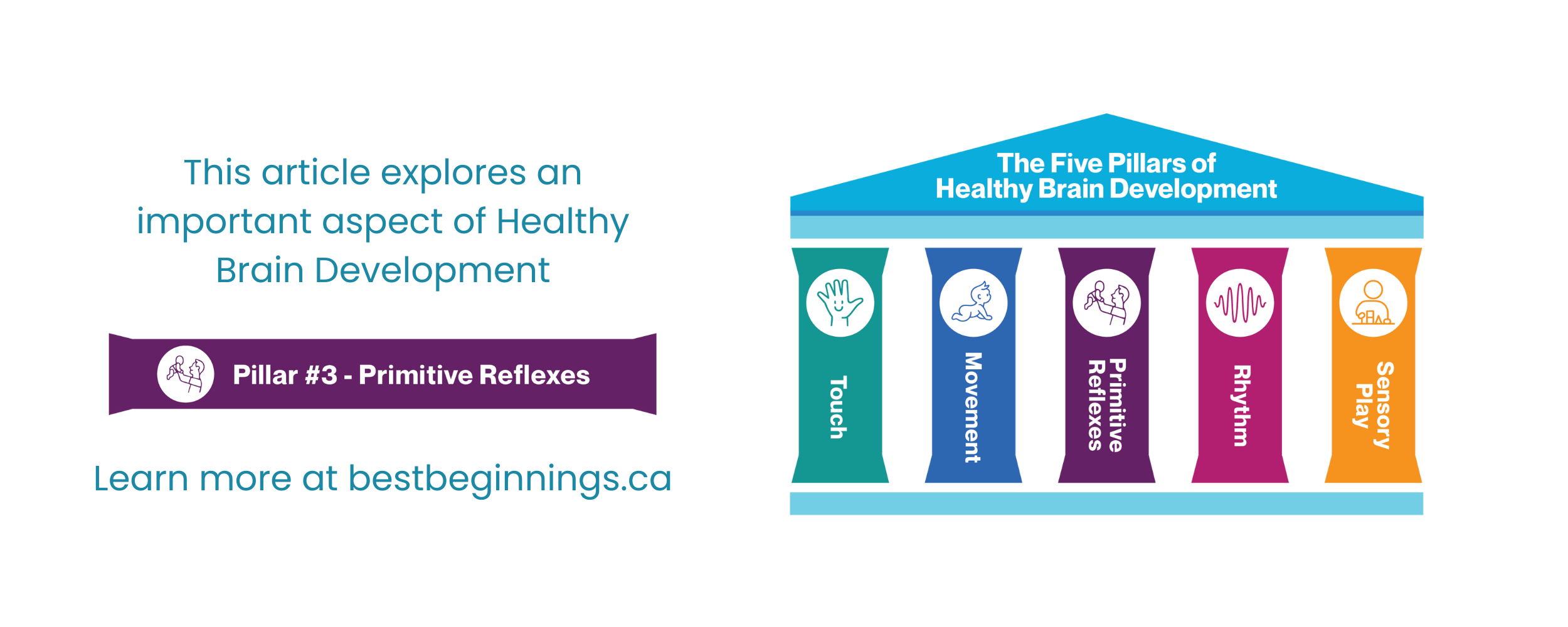Understanding Primitive Reflexes: How Early Movements Shape Baby’s Brain
In Baby’s first few months, their tiny bodies move very specifically. You might notice their arms suddenly stretch out when there’s a loud sound or feel their little fingers wrap tightly around yours and squeeze. These automatic movements are called primitive reflexes, and they function as Baby’s earliest tools for growth and survival.
Primitive reflexes are automatic movements controlled by the brainstem that help Baby eat, breathe, and ensure that they are safe. The Startle reflex helps Baby take their first breath at birth and helps them alert their caregivers that they don’t feel safe. The Palmar grasp helps them hold your finger, strengthening their hands and preparing for fine-motor skills later on. The Rooting reflex guides Baby to the breast or bottle for feeding (1).
As Baby grows, these reflexes are meant to fade to make room for more intentional movement. When you notice Baby starting to lift their head, reach for toys, or roll onto their tummy, you’re witnessing a brain and body working together to replace these automatic reflexes with purposeful action. This process is called integrating primitive reflexes.
Gentle massage, play, and tummy time all support the process of integrating primitive reflexes. Through repeated movement and input to the brain from the senses, Baby’s brain learns to integrate those reflexes into new skills like crawling, sitting, and balancing. These early patterns are the foundation for coordination, attention, and even emotional regulation later in life (2)(3).
If certain reflexes stay active after they should naturally integrate, Baby might appear fussy during tummy time, struggle with balance, or seem unusually startled by noise or touch. These are often small, temporary signs that their nervous system needs a bit more practice and support—something as simple as specific body movements, tummy play, or calming massage can make a difference (4).
By learning about primitive reflexes, you gain insight into Baby’s incredible brain-body connection. Each stretch, wiggle, and grasp is part of a natural sequence that helps them grow strong and confident in their body.
Learning to massage and move with Baby is easy and fun. Visit bestbeginnings.ca to discover the Best Beginnings Infant Massage and Movement Program — a gentle, research-based way to support Baby’s early development through touch and play. In this guide, parents learn about specific movements that parents can easily add into their play time to help Baby stimulate and integrate their primitive reflexes.
References
Goddard Blythe, S. (2012). Reflexes, learning and behavior: A window into the child's mind. Hawthorn Press.
Phelan, S. K. (2015). Reflexes and development: Understanding the building blocks of movement and learning. Movement Matters Press.
Taylor, M., & Houghton, S. (2002). Neural organization and early movement: The foundation of learning and behavior. Developmental Review, 22(4), 470-497.
Brandes, B. (2018). Symphony of reflexes: Interventions for human development, autism, ADHD, CP, and other neurological disorders. Pyramid Educational Consultants.



